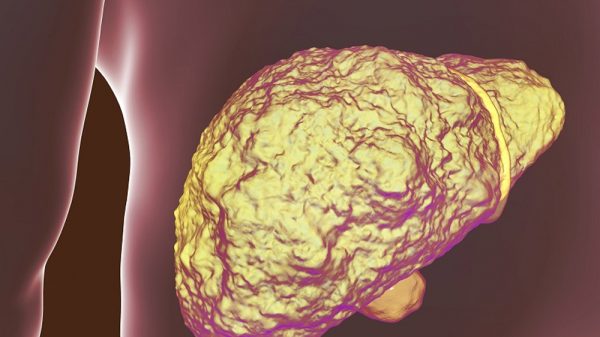Learn about when the first liver transplant happened in history in this article. First, let’s get reacquainted with the liver. Next to the skin, the liver is the largest organ in your body. Your liver is found in the upper right section of your abdominal cavity, just beneath your diaphragm, atop your right kidney, stomach, and intestines. This dark and red-brown colored organ carries several functions.
The Liver And Its Function
Its main task is filtering blood originating from your digestive tract, just before sending it to other parts of your body. Additionally, the hardworking liver is in charge of detoxifying chemicals, metabolizing drugs while secreting bile (green/yellow/brown fluid) which ends up right back inside your intestines. The liver can produce 700 – 1,000 ml bile on a daily basis. While it can seem gross, the bile is the secret to the body’s potential for breaking down as well as absorbing fats. The bile assembles in small ducts then moves toward the primary bile duct, where it is transported to your duodenum (part of the small intestine), directly or through via the gallbladder. There are more functions of the liver too, it doesn’t end just here. The liver also carries the duties of excreting cholesterol, bilirubin, hormones, as well as drugs. It activates enzymes, stores vitamins, and minerals, as well as glycogen, and synthesizes plasma proteins like albumin. Your liver is a very important bodily organ. Keep reading to learn more about its history.
First Liver Transplant
Liver transplantation is a particular procedure for patients suffering from conditions in the liver such as acute liver failure, cirrhosis, decompensated disease, or hepatocellular cancer under Milan criteria. But did you know? The first liver transplant was not a big success. In 1963, a physician by the name of Dr. Thomas E. Starzl carried out the first-ever liver transplant for a human at the University of Colorado-Medical School. Unfortunately, success was constrained because of the use of wrong types of immuno-suppressive medicines during the time. Patients could not live past a couple of weeks. However, four years after that, the development of accessible immuno-suppressive medication established the first effective liver transplant.
Liver Transplantation History
In 1958, a man named Francis Moore explained the orthotopic liver transplant technique for dogs. By 1963, Starzl conducted the first-ever liver transplantation. However, his first five did not see patients outlast the past 23 days. In 1967, inspired by Calne, the doctor that used the anti-lymphocytic serum, Starzl started a successful group of liver transplants. Until 1977, two hundred liver transplantations have been undertaken worldwide. During that period of time, many technical problems were finally conquered.
By 1955, Doctor Welch became the first surgeon to scientifically describe liver transplantation in treatment form. During this time, he suggested an ectopic liver transplant inside the abdominal cavity. By 1979, Calne applied for the very first time, cyclosporine for two patients that went through liver transplantation. This launched an emerging breakthrough for the history of liver transplantations. In 1983, after evaluating 531 liver transplant cases, the National Institute of Health finally approved liver transplants as a legitimate treatment solution for the healing of final-stage liver disease. Around 1989, Starzl documented 1,179 consecutive patients that went through liver transplantation then revealed a success rate of around 1 – 5 years at 73% followed by 64%, respectively.
Finally, during 1990, Starzl revealed the very first usage of the brand new tacrolimus as an immune-suppressant agent for patients undergoing liver transplantation and suffering rejection while using a conventional immuno-suppressive cure. The results of cyclosporine transition through tacrolimus for these patients, as well as proving its absolute safety, later newer clinical studies ended up being executed with the use of tacrolimus as a primary immuno-suppressive for liver transplantations. During the same year as well, the Liver Transplantation Program was pioneered at Israelita Albert Einstein Hospital, and to date, more than 1,400 transplants have been performed.
Liver transplantation continued to evolve, as Starzl, who was at last discouraged, later came to identify the primary difficulties surrounding liver transplantation. He began to develop several procedures and guidelines that will lead safely and successfully to this day for liver transplantation science and medicine. In 1967, inspired by Calne to make use of anti-thymocyte globulin drugs, Starzl with success conducted a number of liver transplantations at the University of Colorado. His first case was one patient that had a type of progressed hepatocellular cancer. The patient survived the past one year with preserved liver functions but later passed away because the disease re-occurred.
Around 70% death rate was common for most liver transplantations. Its non-selective scheme for immuno-suppression, paired alongside the surgical difficulty of liver transplants during this period, resulted in patients becoming exceedingly vulnerable towards infections. Infection problems as well as chronic rejection found in liver transplantations were the principal reason for both early and later deaths. Subsequently, better immuno-suppressive as well as counter-infection agents were gradually developed. Until 1997, approximately 200 transplantations were conducted around the world. During this time, technical problems such as intraoperative coagulopathy process, surgery on the donor, and biliary reconstruction were primary concerns. In the subsequent 15 years, it was exclusively Cambridge University and the University of Colorado permitted to conduct empirical clinical scientific studies as part of liver transplantation.
A major obstacle in the liver transplant field in the past was the inadequate host of donors in comparison to the growing need for transplant prospects. Appropriate donor and recipient selection, organ preservation, and allocation can resolve this for future more successful outcomes.
Currently, now over 40 years since the very first liver transplantation, over 10,000,00 liver transplants have been conducted around the globe. The liver transplant patient survival rate during the recovery‘s first year is a major high jump at approximately 80% – 90% survivors. Progressive enhancement in outcomes, surgical concerns, rejection process, and untreated sepsis controls have been resolved. Without the liver, our bodies cease the functioning of extremely critical processes. It is vital to take care of it by eating the right, healthy foods, and refraining from alcoholic beverages. The history of liver transplants and the first liver transplant is a moving and successful one, now you know better.























